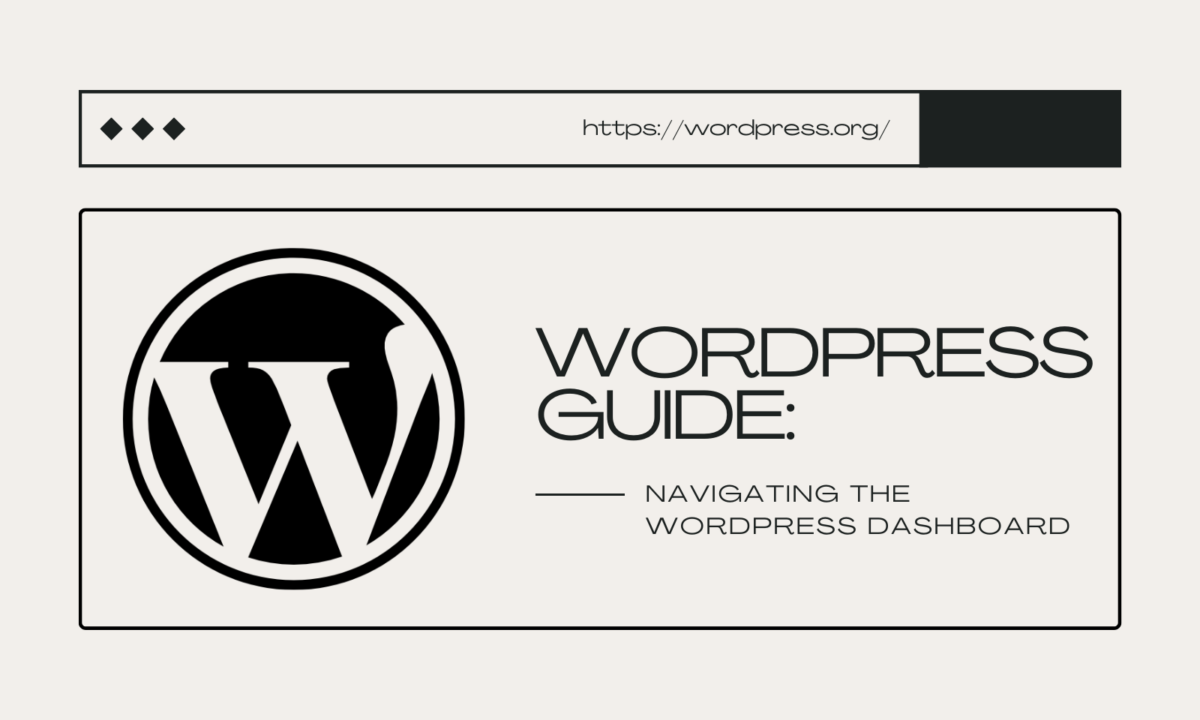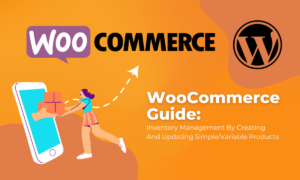The WordPress dashboard is the central tool you’ll need to be familiar with to work with WordPress.
If you’re new to WordPress, it may be a bit overwhelming at the start to see so many features and options on the dashboard.
Getting started with the WordPress Dashboard
Source: Getting Started With The WordPress Dashboard on YouTube by WordPress
Today, let’s familiarise ourselves with the WordPress dashboard to help you know what each feature does, as well as when and how to use them.
Logging into Your Site
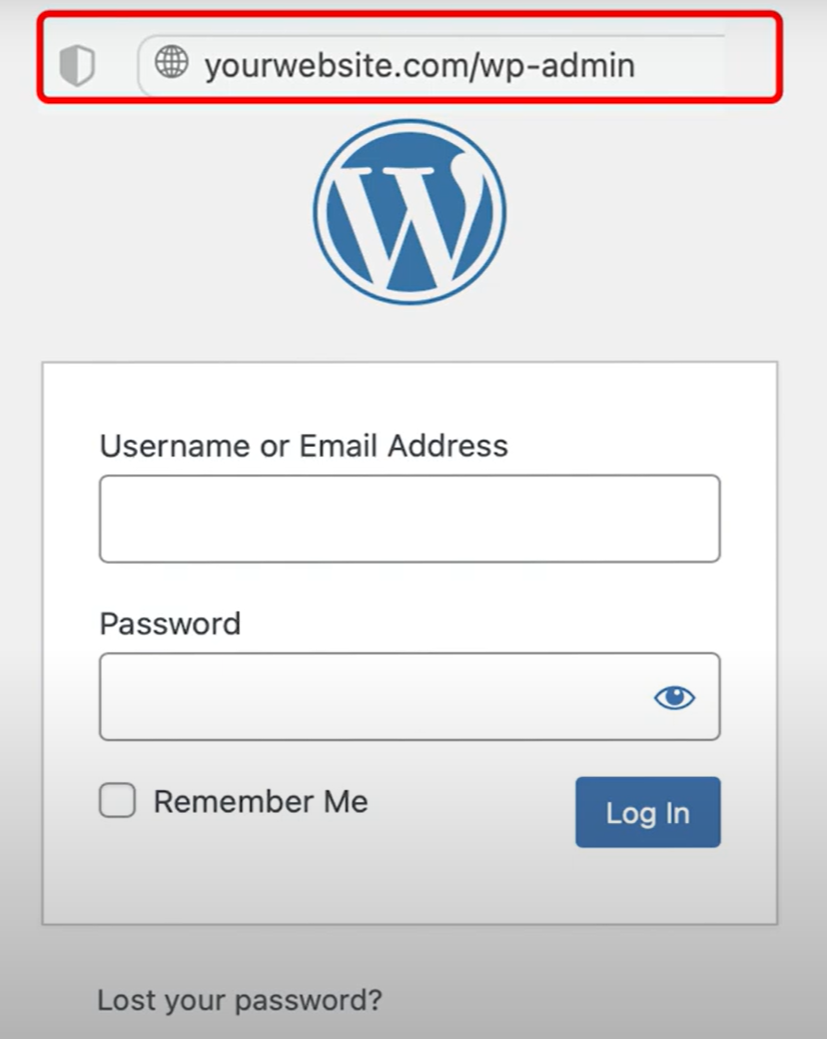
First of all, you’ll need to be logged in to your WordPress account that has access to the site you want to edit or create.
Simply enter your website’s URL in the address bar of your web browser. When prompted, input your login details and click “Log In” to access your site’s WordPress dashboard.
Understanding the Admin Bar

Once you’re logged in, you’ll be directed to the WordPress Dashboard. Take a look at the main admin bar at the top of your screen.
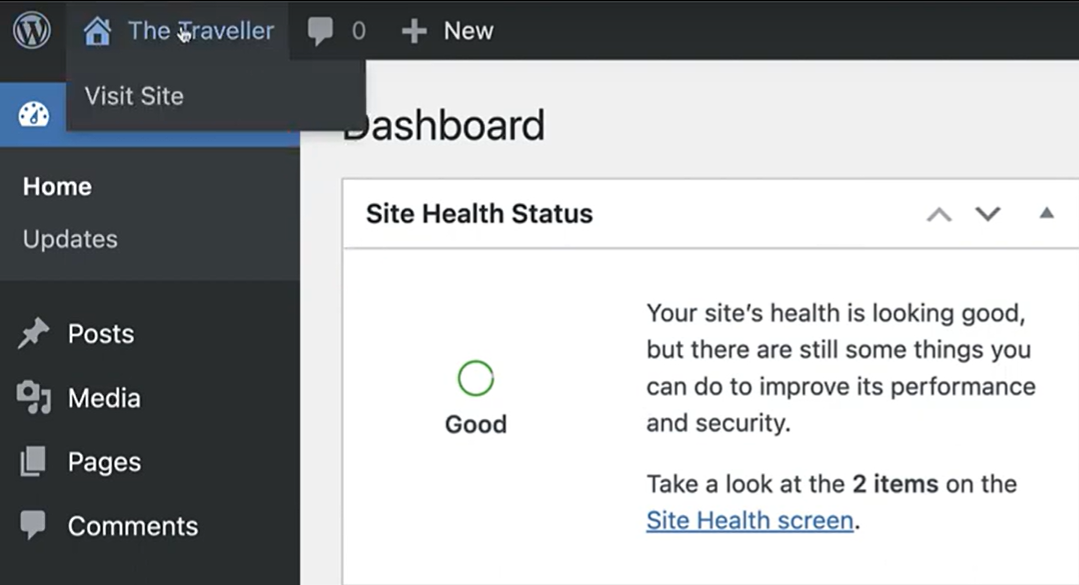
Clicking on the home icon takes you to your site’s homepage.
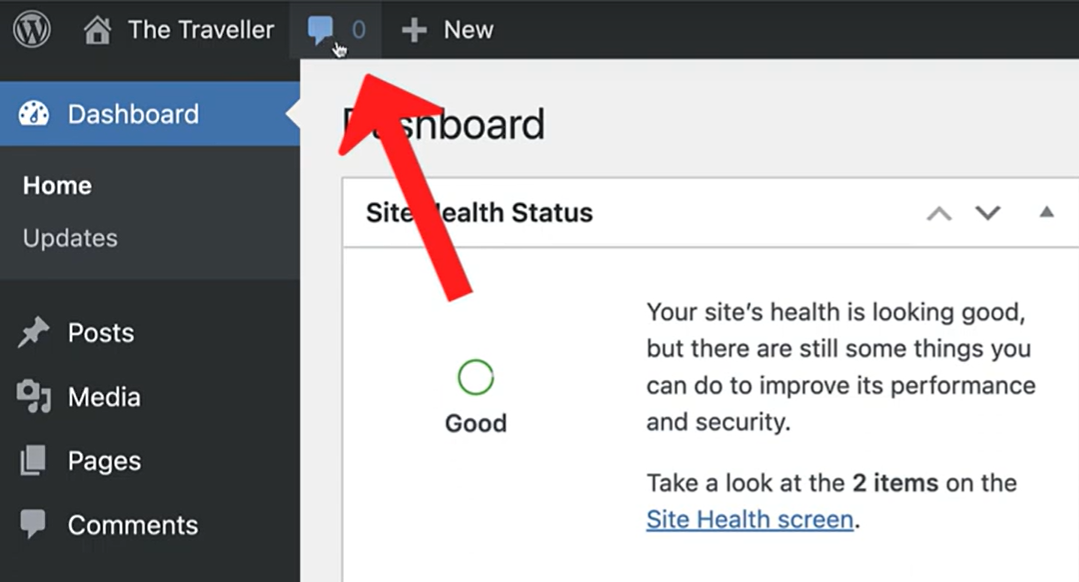
If you want to see if there are any new updates and/or comments, click on the notification icon.
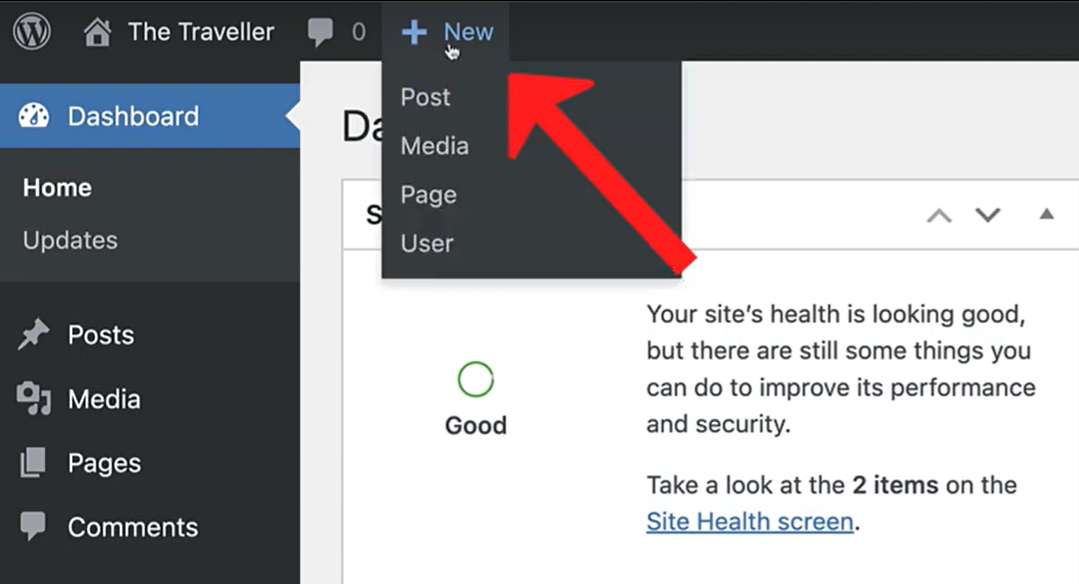
When you hover over “New”, you’ll see options to create elements such as posts, media items, pages, and more, depending on the permissions granted to your user role. (i.e. admin, standard user, etc)
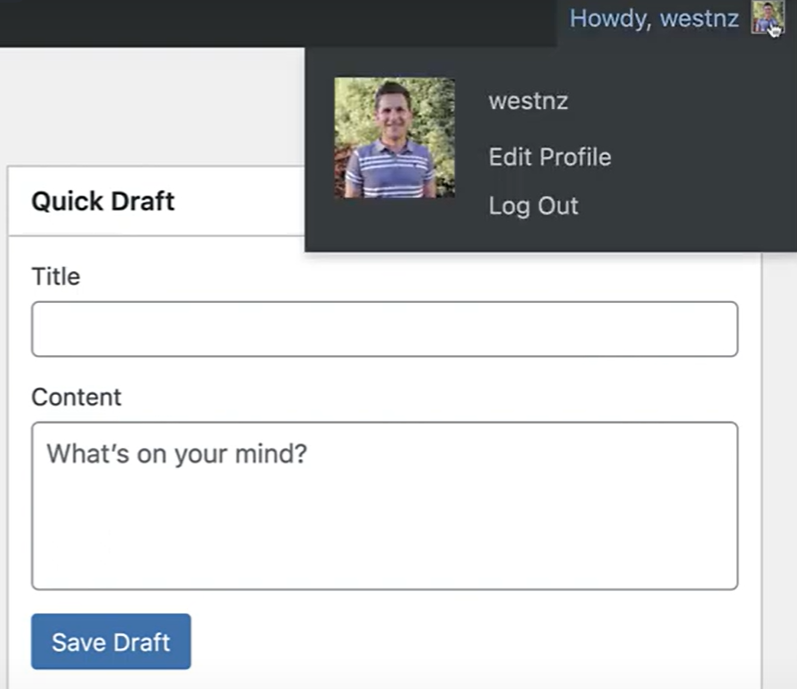
Your username and avatar are both displayed in the top right corner, offering quick access for you should you need to view or customise your profile settings.
Exploring Administrative Widgets
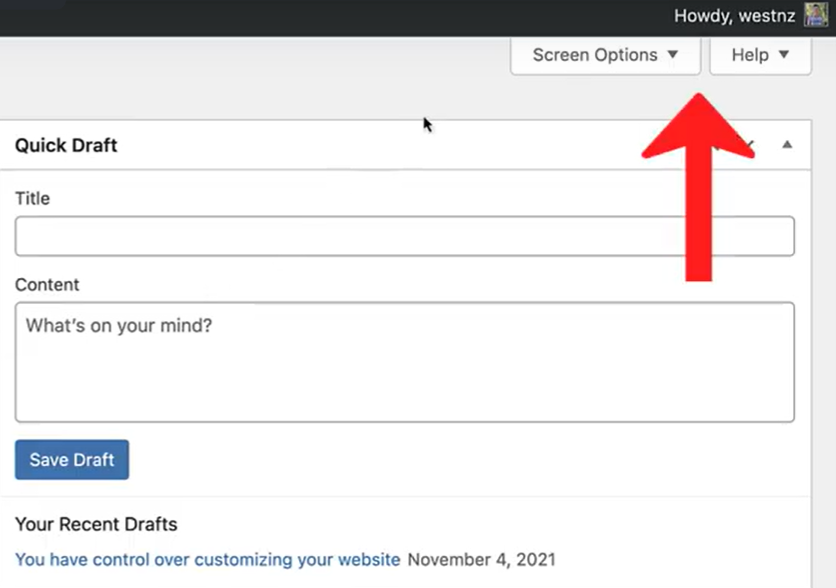
Below the admin bar, discover administrative widgets that can be customised using the screen options feature.
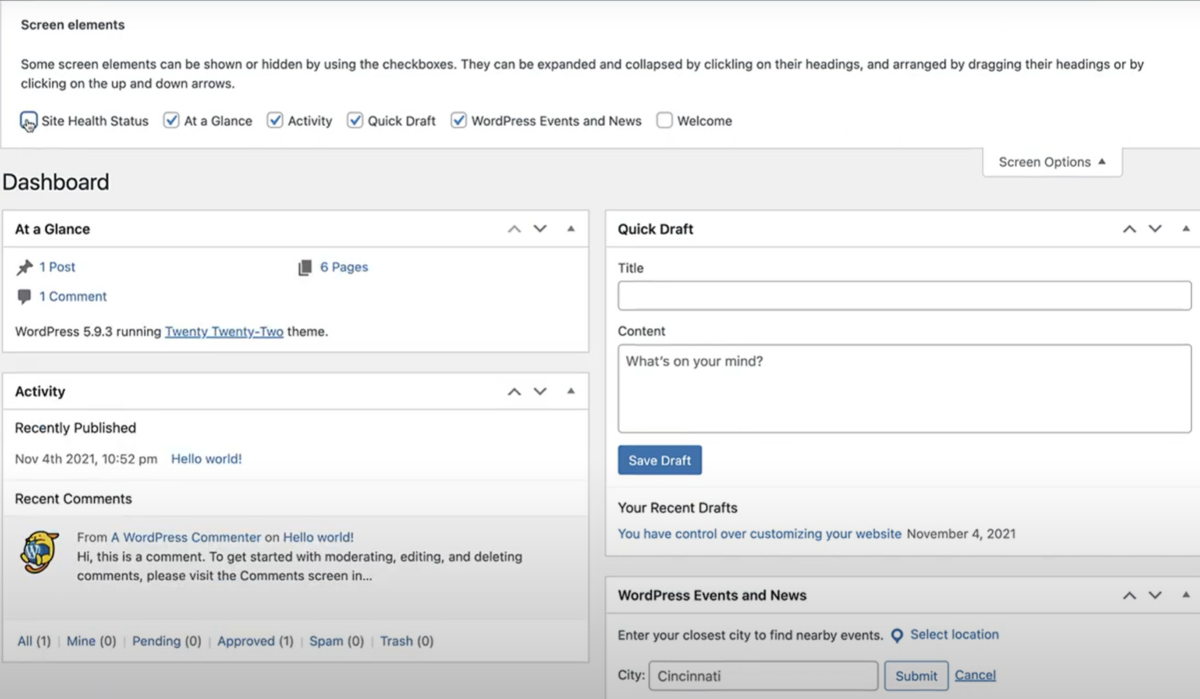
Here, you can select which widgets will appear and which will not by ticking and unticking the boxes representing each of them.
If you would like to change the position of each widget here, simply drag and drop widgets to arrange them as desired.
Remember, your dashboard’s appearance may change based on plugins and hosting configurations.
Utilising Dashboard Features
It is good to know what the widgets on your dashboard do. Here are some of their uses:
1. Quick Draft
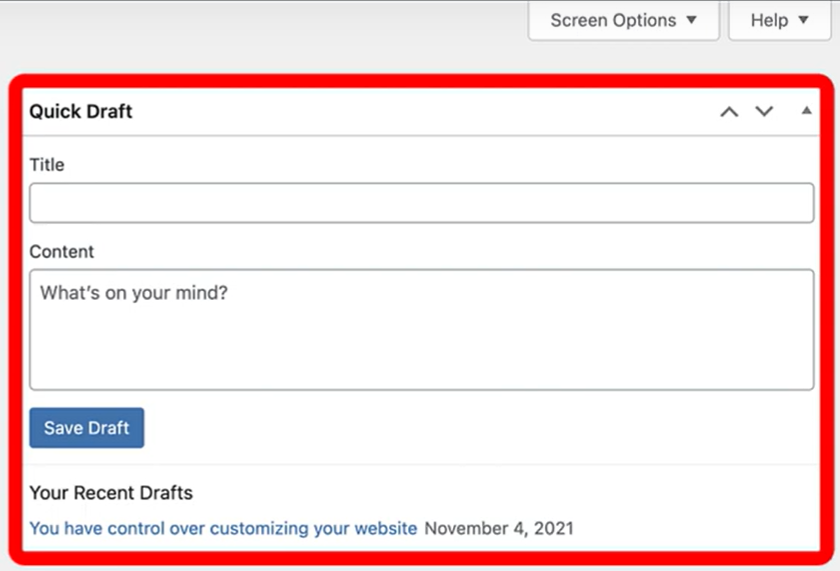
The quick draft widget allows you to jot down post ideas that are saved as drafts.
2. At a Glance

The “At a Glance” widget provides a summary of your site’s content and current WordPress version.
3. Activity
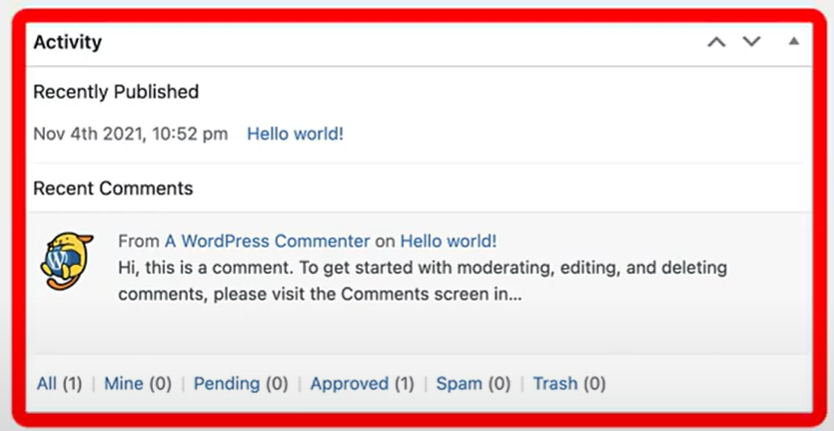
Should you want to see recent activities and comments from yourself or visitors, take a look at the “Activity” widget.
4. WordPress Events and News
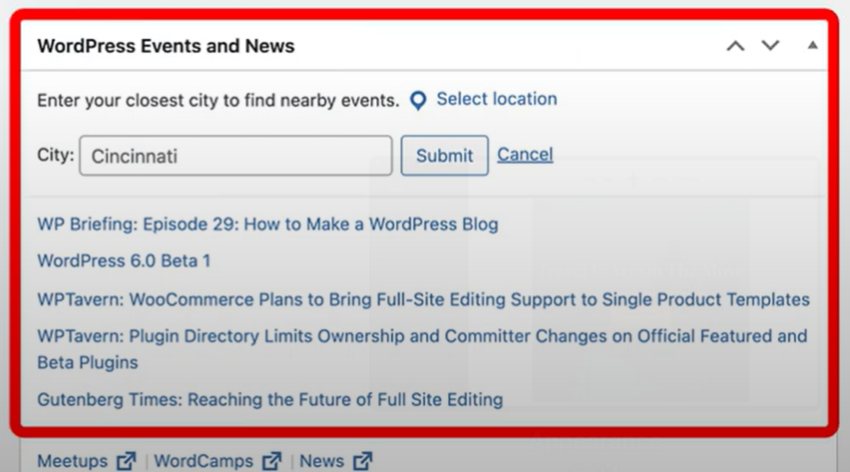
To gain more community-contributed knowledge about WordPress, stay connected with the WordPress community through the Events and News panel.
Navigating the Left Sidebar
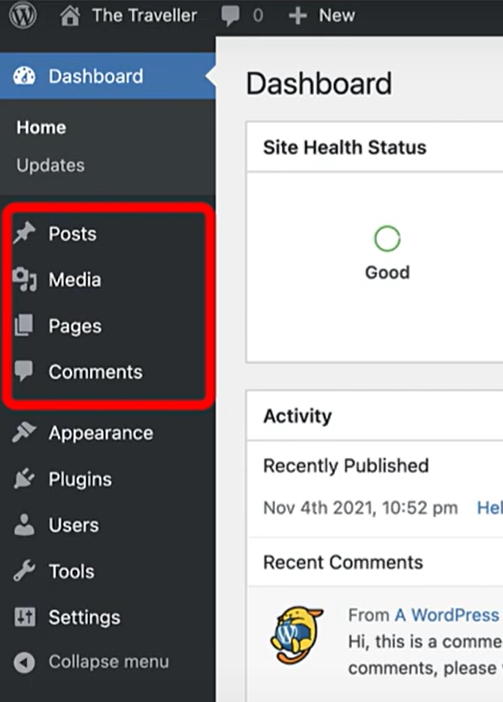
The left sidebar serves as your primary navigation hub. Commonly used links include posts, pages, and comments can be found here.
Content-related options, such as posts and media are grouped towards the top, while functional and appearance settings reside at the bottom.
Managing Posts and Pages

Posts are for dynamic content pieces such as blog posts and book reviews. Here, you can add new posts, edit existing posts, or even delete existing posts that you no longer want to be on your site.
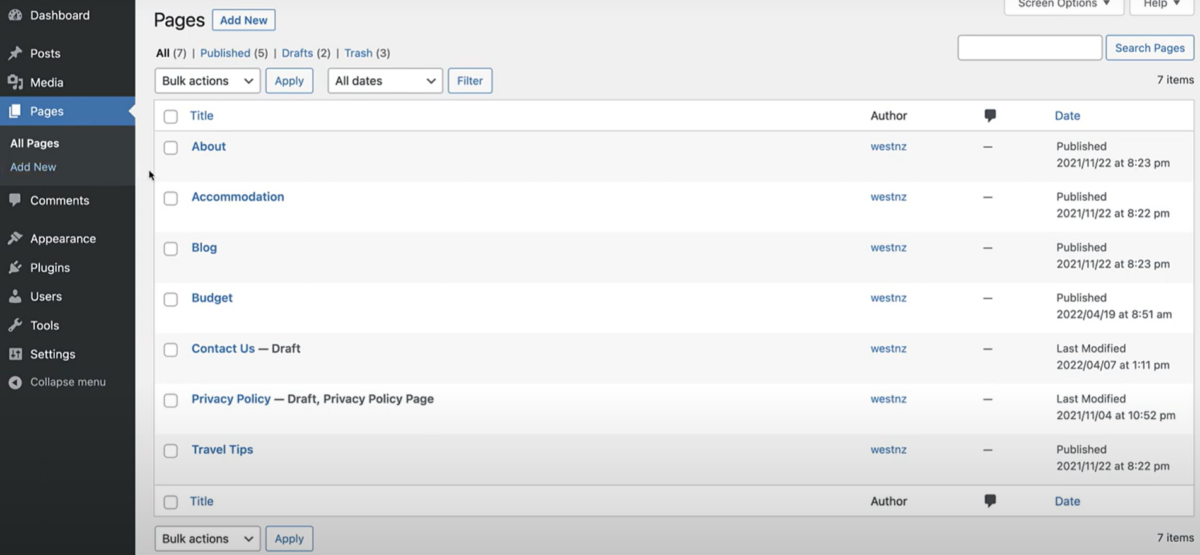
Pages, on the other hand, are for static content like “About” or “Contact” pages, the ones that you would tend to find on your website’s navigation bar.
Should you wish to change them though, you can always update them whenever you want.
Exploring Media and Comments

The media library is where you can find all of your media files, including images, audio, and documents.
By clicking on the drop-down button, you can sort by media type, such as only showing images, videos, or documents.
You can also add new media anytime by clicking on “Add New” and selecting the files from your computer or by simply dragging and dropping the files into the page.

As you manage your site, you might want to moderate the comments left by visitors for any unwanted or inappropriate comments.
Comments left by visitors can be moderated directly from the dashboard, allowing you to easily edit, reply, or even delete the comments.
Customising Appearance and Installing Plugins
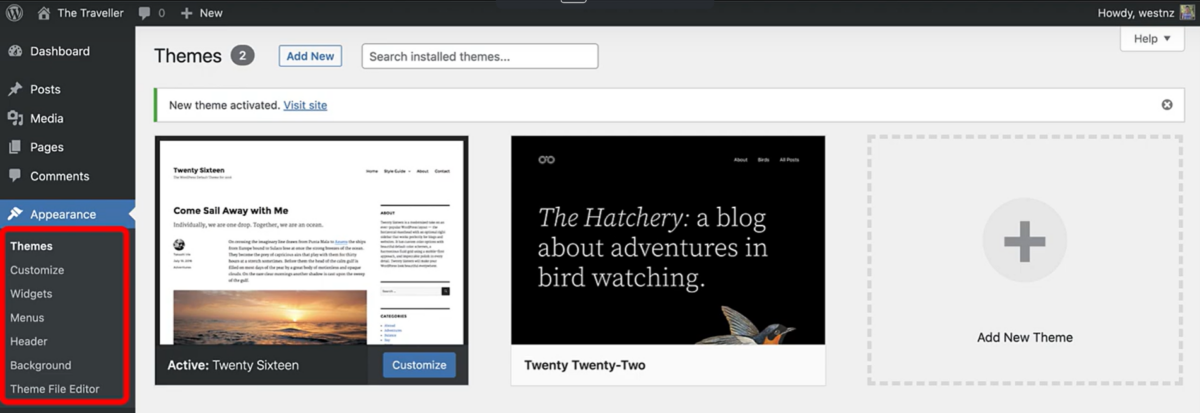
In the appearance section, if you base your site on a selected theme, you can always change to a different theme should you see the need to.
For classic themes, you’ll also have access to the customisation tools as seen above, under “Appearance”.
If you are using a block-based theme and wish to go into more in-depth customisations, you can use the Site Editor to make more changes.
Plugins

Plugins are additional, downloadable features that you add to your site.
Feel free to explore and install plugins to enhance your site’s functionality from the plugins menu and if you’d like to learn more, have a read on our Guide on Choosing and Installing Plugins on WordPress where we go further in-depth into plugins in WordPress.
Managing Users

Last but not least, we have the Users menu. Here, you can add new users and assign different roles to users, whether new or existing ones.
Each role has distinct capabilities, such as subscribers being able to view the site but not edit while editors being able to both view and edit the site.
Now, you have learnt about the basic features of the WordPress dashboard. Hope it helps and stay tuned for more tutorials to help you in your journey of learning WordPress!
Related to:

